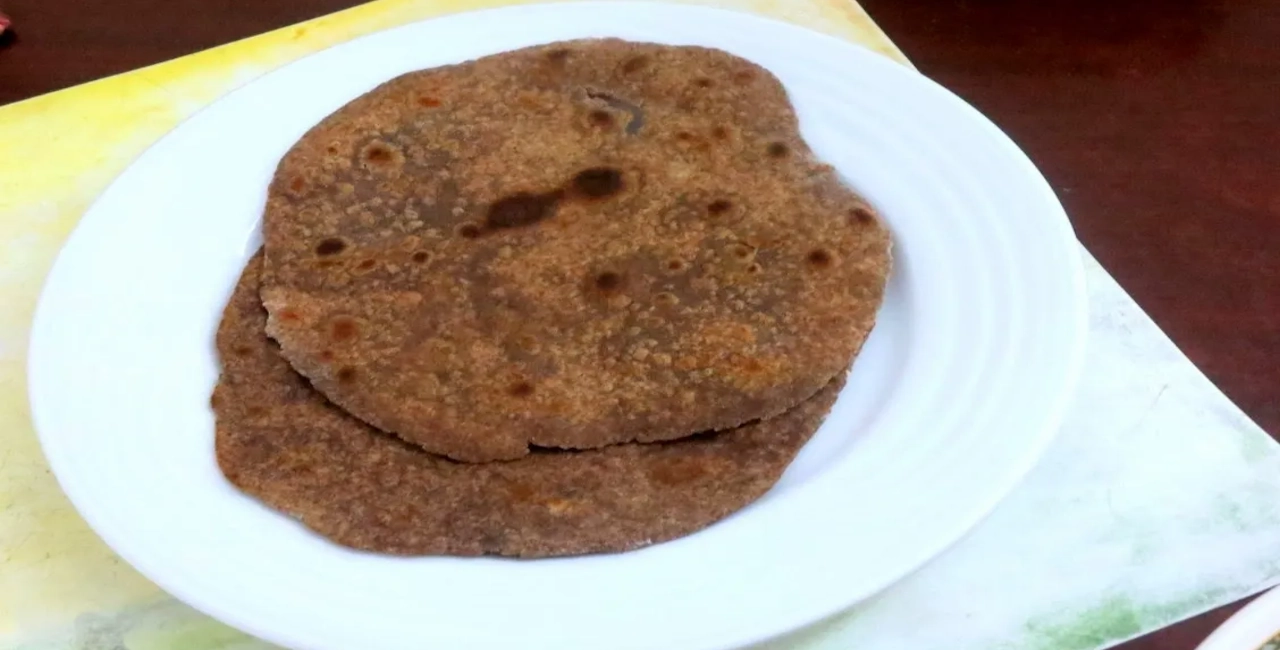Currently Empty: ₹0.00

Mandua ki Roti, also known as Finger Millet Bread, is a traditional dish of Uttarakhand made from mandua (finger millet) flour. In the lush hills and valleys of Uttarakhand, where agriculture and food habits are closely linked to the natural environment, Mandua ki Roti has been a staple food for generations. This humble yet nutritious flatbread embodies the unique culinary heritage of the region, making it popular for both its health benefits and its earthy, wholesome flavor.
What is Mandua?
Mandua, or finger millet (Eleusine coracana), is a hardy grain grown primarily in the Himalayan region, thriving in the hilly, high-altitude climate of Uttarakhand. Mandua is resilient and easy to cultivate in areas with poor soil quality and low water availability, making it an important crop in these mountainous regions. Known as “ragi” in South India, this millet is revered for its high nutritional value, as it is rich in protein, dietary fiber, iron, calcium, and essential amino acids.
Due to its nutritional benefits, mandua is often recommended as a staple for a balanced diet. It is particularly beneficial for bone health, helps maintain blood sugar levels, and is gluten-free, making it an excellent choice for people with gluten sensitivities.
Preparation of Mandua ki Roti
Mandua ki Roti is simple to make and requires just a few basic ingredients: mandua flour, a little wheat flour (optional, to improve binding), water, and salt. Here’s a basic recipe:
Ingredients:
- 1 cup mandua (finger millet) flour
- ¼ cup wheat flour (optional, for easier rolling)
- Salt to taste
- Water as needed
Instructions:
- Mix the Flour: Combine the mandua flour, wheat flour (if using), and salt in a mixing bowl.
- Knead the Dough: Gradually add water to the flour mixture, kneading it into a smooth, pliable dough. Finger millet flour doesn’t bind as well as wheat, so kneading carefully is essential.
- Roll Out the Roti: Take a small portion of the dough and roll it into a round, flat shape using a rolling pin. Mandua flour is crumbly, so rolling the roti between sheets of parchment or by patting it by hand can help prevent tearing.
- Cook: Heat a skillet or tawa over medium heat. Place the rolled roti on the hot surface and cook for a minute or two on each side, adding a touch of ghee for added flavor.
The result is a hearty, slightly nutty-tasting flatbread that is perfect when paired with local curries, green chutneys, or even a dollop of fresh homemade butter.
Serving Suggestions
In traditional Uttarakhand households, Mandua ki Roti is often served with dishes like Bhaang ki Chutney (a flavorful paste made from hemp seeds), Kumaoni Raita (yogurt-based dish with spices and cucumber), or a warming vegetable or lentil curry. The earthy flavor of the roti complements the mildly spiced and fresh flavors typical of Uttarakhand cuisine. This combination also adds to the nutritional balance, making the meal wholesome and satisfying.
During the winter months, it’s common to pair Mandua ki Roti with ghee (clarified butter) and gur (jaggery), which not only enhances the flavor but also provides extra energy and warmth for the colder climate.
Health Benefits of Mandua ki Roti
Mandua ki Roti is prized not only for its taste but also for its health benefits, which have made it popular beyond Uttarakhand. Some of the benefits include:
- High in Calcium: Mandua has one of the highest calcium contents among grains, supporting bone health and reducing the risk of osteoporosis.
- Rich in Fiber: The high fiber content aids digestion and can help with weight management. It also has a low glycemic index, making it beneficial for diabetics.
- Packed with Iron: Mandua is a good source of iron, essential for preventing anemia and promoting oxygen transport in the blood.
- Protein-Rich: The grain contains good-quality protein, which is especially important in vegetarian diets.
- Gluten-Free: Being naturally gluten-free, mandua is ideal for those with gluten sensitivities or celiac disease.
Cultural Significance and Revival
Mandua ki Roti holds cultural significance in Uttarakhand, as it represents the region’s deep-rooted agricultural practices and traditional wisdom. With changing lifestyles, urbanization, and the influx of modern food choices, Mandua ki Roti had seen a decline in popularity. However, recent awareness around the health benefits of traditional millets has led to its resurgence, as people are returning to these nutritious grains.
The Indian government and various NGOs have also been promoting millets, including mandua, as part of initiatives to support sustainable agriculture and improve nutrition in rural and urban areas. The United Nations declared 2023 the “International Year of Millets,” sparking renewed interest in incorporating millets like mandua into daily diets across the world.
Conclusion
Mandua ki Roti is more than just a staple in Uttarakhand; it’s a reflection of the region’s sustainable practices and a symbol of its agricultural heritage. This traditional millet-based flatbread is a powerhouse of nutrients and a flavorful addition to any meal, showcasing the value of local foods that have stood the test of time. In a world where processed foods dominate, Mandua ki Roti offers a wholesome, gluten-free alternative that combines the best of health, taste, and tradition. Whether you’re in the hills of Uttarakhand or elsewhere, trying Mandua ki Roti offers a taste of this unique heritage and a reminder of the value of nutritious, sustainable food choices.


